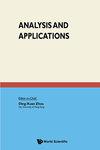在静态和时间依赖情况下,用于近似病毒衣壳在平面上的变形的三维离散模型
IF 2
2区 数学
Q1 MATHEMATICS
引用次数: 1
摘要
在本文中,我们提出了一个控制病毒衣壳变形的三维离散模型,该模型被建模为正二十面体,并且不与最初仅对应于一个顶点的给定平面相交。首先,我们在一个合适空间的非空、闭和凸子集上建立了一组变分不等式形式的模型。其次,我们证明了该模型解的存在性和唯一性。第三,我们对这个模型进行了数值测试,我们观察到数值实验的输出符合物理学。最后,我们建立了相应的含时障碍问题解的存在性。本文章由计算机程序翻译,如有差异,请以英文原文为准。
A three-dimensional discrete model for approximating the deformation of a viral capsid subjected to lying over a flat surface in the static and time-dependent case
. In this paper we present a three-dimensional discrete model governing the deformation of a viral capsid, modelled as a regular icosahedron and subjected not to cross a given flat rigid surface on which it initially lies in correspondence of one vertex only. First, we set up the model in the form of a set of variational inequalities posed over a non-empty, closed and convex subset of a suitable space. Secondly, we show the existence and uniqueness of the solution for the proposed model. Thirdly, we numerically test this model and we observe that the outputs of the numerical experiments comply with physics. Finally, we establish the existence of solutions for the corresponding time-dependent obstacle problem.
求助全文
通过发布文献求助,成功后即可免费获取论文全文。
去求助
来源期刊
CiteScore
3.90
自引率
4.50%
发文量
29
审稿时长
>12 weeks
期刊介绍:
Analysis and Applications publishes high quality mathematical papers that treat those parts of analysis which have direct or potential applications to the physical and biological sciences and engineering. Some of the topics from analysis include approximation theory, asymptotic analysis, calculus of variations, integral equations, integral transforms, ordinary and partial differential equations, delay differential equations, and perturbation methods. The primary aim of the journal is to encourage the development of new techniques and results in applied analysis.

 求助内容:
求助内容: 应助结果提醒方式:
应助结果提醒方式:


